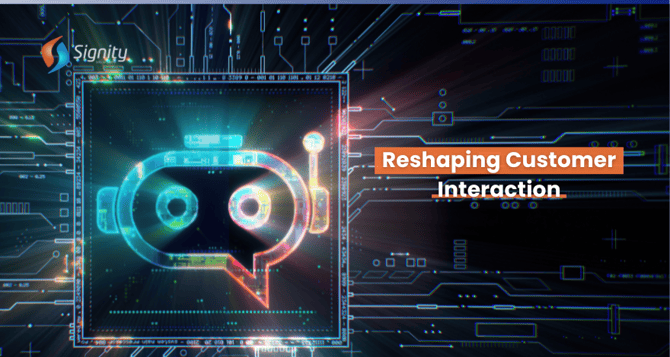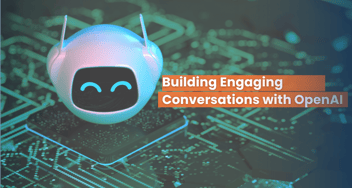How Chatbots are Reshaping Customer Interaction?
Discover how chatbots are revolutionizing customer interaction, offering efficient support, personalized experiences, seamless communication, and driving business growth through enhanced engagement.

In today's digital age, businesses and organizations are constantly seeking innovative ways to enhance customer service, streamline operations, and improve user experiences. Enter chatbots – intelligent virtual assistants powered by artificial intelligence (AI) and natural language processing (NLP) – which are transforming the way companies engage with their customers and manage internal processes. In this article, we'll explore the technical implementation of chatbots and their diverse applications across industries and provide examples of how they are reshaping various sectors.
Understanding Chatbots
At their core, chatbots are computer programs designed to simulate human conversation through text or voice interactions. They leverage AI algorithms and NLP techniques to understand user queries, provide relevant responses, and execute tasks autonomously. The technical implementation of chatbots typically involves the following components:
Natural Language Understanding (NLU):
Chatbots utilize NLU to parse and interpret user inputs, extracting key intents, entities, and context from text or speech. NLU algorithms analyze sentence structure, semantics, and sentiment to comprehend the user's query accurately.
Dialog Management:
Dialog management is responsible for orchestrating the conversation flow between the user and the chatbot. This involves maintaining context, managing multiple conversation paths, and generating appropriate responses based on the current state of the interaction.
Backend Integration:
Chatbots integrate with backend systems, databases, and third-party APIs to access and retrieve information required to fulfill user requests. This integration enables chatbots to perform tasks such as retrieving account information, processing payments, or accessing knowledge bases.
Machine Learning Models:
Advanced chatbots employ machine learning models, such as neural networks or deep learning algorithms, to continuously learn from user interactions and improve their performance over time. These models enable chatbots to adapt to user preferences, refine their language understanding capabilities, and handle complex queries more effectively.
Examples of Chatbots Across Industries
Customer Service:
Many companies deploy chatbots on their websites or messaging platforms to provide instant support to customers. For example, airline companies use chatbots to assist with booking flights, checking flight status, and answering FAQs.
E-commerce:
Online retailers leverage chatbots to enhance customers' shopping experience. Chatbots can recommend products based on user preferences, provide order updates, and assist with customer inquiries, reducing the need for human intervention.
Healthcare:
Chatbots are increasingly used in the healthcare industry to provide medical advice, schedule appointments, and answer patient queries. Telemedicine platforms utilize chatbots to conduct preliminary assessments, gather patient information, and connect users with healthcare providers.
Finance:
Banks and financial institutions deploy chatbots to facilitate banking transactions, offer financial advice, and provide account-related information. Chatbots can assist customers with account inquiries, transfer funds, and even help with budgeting and investment recommendations.
Technical Implementation Example
Let's consider a simplified example of a customer service chatbot for an e-commerce website:
Natural Language Understanding (NLU):
The chatbot employs NLU to interpret user queries, such as "track my order" or "return policy." NLU algorithms analyze the text to identify the user's intent and extract relevant entities, such as order numbers or product names.
Dialog Management:
The chatbot uses a dialog management system to maintain the conversation flow. It responds to user queries with appropriate messages, such as "Your order is scheduled for delivery on [date]" or "Our return policy allows for returns within 30 days of purchase."
Backend Integration:
The chatbot integrates with the e-commerce platform's backend systems to access order information, inventory data, and customer records. It retrieves relevant information to fulfill user requests, such as order status updates or product availability.
Machine Learning:
Over time, the chatbot learns from user interactions and feedback to improve its performance. It continuously refines its language understanding capabilities, expands its knowledge base, and adapts to new user queries and scenarios.
Conclusion
Chatbots represent a transformative technology with widespread applications across industries, from customer service and e-commerce to healthcare and finance. Through their technical implementation, chatbots harness the power of AI, NLP, and machine learning to automate interactions, enhance user experiences, and streamline business operations.
Enhance Customer Experience with Chatbot Development
Elevate customer interaction with our cutting-edge chatbots. Enhance engagement, improve efficiency, and drive growth with our expert team.
As organizations continue to adopt chatbot technology, they stand to benefit from improved efficiency, scalability, and customer satisfaction, ushering in a new era of conversational AI-driven interactions.















